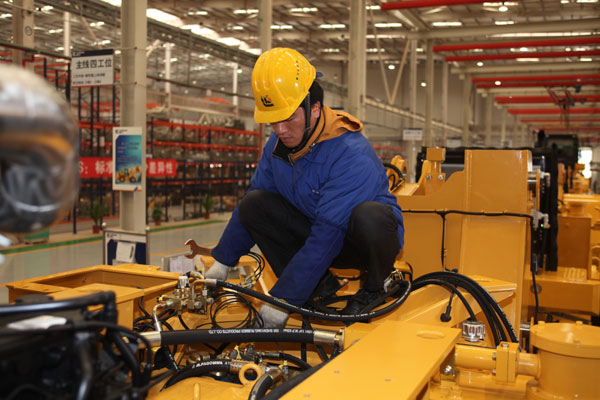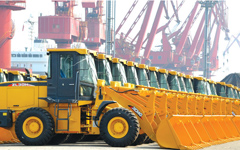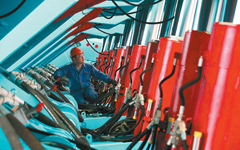LiuGong builds a bigger global vision
By Li Yang in Liuzhou, Guangxi (China Daily) Updated: 2014-02-12 07:07
|
 |
|
Loaders have become a main export product of LiuGong in recent years. Huo Yan / China Daily |
Looking abroad
Zeng visited Caterpillar Inc's factory in the United States for the first time in early 1983 as a young technician working for LiuGong and was impressed. His first job in 1984 upon his return was to translate the introductory book of Caterpillar Inc's centenary history and its annual financial reports into the Chinese language.
"LiuGong's technicians regarded themselves as true students and worked hard to learn everything from the international giants at that time," Zeng recalled.
|
 |
|
 |
From 1992, China's construction machinery enterprises entered an era of integration, during which many joint ventures were established. After 2001, when China joined the World Trade Organization, joint and cooperative ventures became rare, replaced by sole-proprietorship enterprises from abroad and Chinese enterprises.
The technologies and advanced management models that Chinese enterprises learned from their foreign counterparts improved the overall level of China's construction machinery.
Caterpillar Inc's experts visited LiuGong in October 1989 and were satisfied with the skills of its workers. They suggested that if LiuGong wanted to improve the quality of its products, it should purchase advanced manufacturing equipment.
LiuGong followed the advice and bought Austria's IGM Robotersysteme AG welding robot installations and numerically controlled machine tools as well as axle shell production lines from Italy and the United States.
This equipment played a crucial role in advancing LiuGong's manufacturing to world-level status.
LiuGong has never stopped pursuing technological innovation using its own research and development staff, who are now based around the world.
Xie Ping, an engineer in the hydraulic pressure workshop, has participated in the research and development work of LiuGong's excavators, loader-diggers, plateau loaders and high-speed loaders since 1986.
"LiuGong technicians have inherited the down-to-earth, hardworking spirit of the old experts from Shanghai and Xi'an," said Xie. "This is LiuGong's legacy that should be passed down to the young staff."
Railway construction in Tibet created a big market for construction machinery builders in the 1990s.
Xie stayed on the Tibet plateau for several years from the late 1990s, conducting experiments to look for solutions to a series of technological problems common in construction machinery above elevations of 4,500 meters and at low temperatures where oxygen is low and ultraviolet radiation is high. In such tough environments, it is hard to start engines, and metals and rubber seal materials wear out rapidly.
Her team found success in 2002 and helped LiuGong make the first plateau loader in the world fit for Tibet construction projects.
But LiuGong is fully aware of the crucial technological gap that entails a national effort to overcome.
"The digger hydraulic plunger is an area in which we lag behind most behind our foreign competitors," said Luo Wei, chief engineer. "The main gap is in the science of materials, which is also generally a weak point for China."
Most of LiuGong's diggers to this day employ imported hydraulic plungers.
"This shows our weakness in many fundamental scientific research areas, such as the science behind materials," Luo added.
Mergers and acquisitions became a shortcut for Chinese enterprises to acquire technology and marketing channels, especially after the financial crisis in 2008.
- NHTSA says finds no 'defect trend' in Tesla Model S sedans
- WTO rare earth ruling is unfair
- Amway says 2014 China sales may grow 8%
- President Xi in Europe: Forging deals, boosting business
- CNOOC releases 2013 sustainability report
- Local production by Chery Jaguar Land Rover this year
- Car lovers test their need for speed in BMW Mission 3
- China stocks close mixed Monday

















